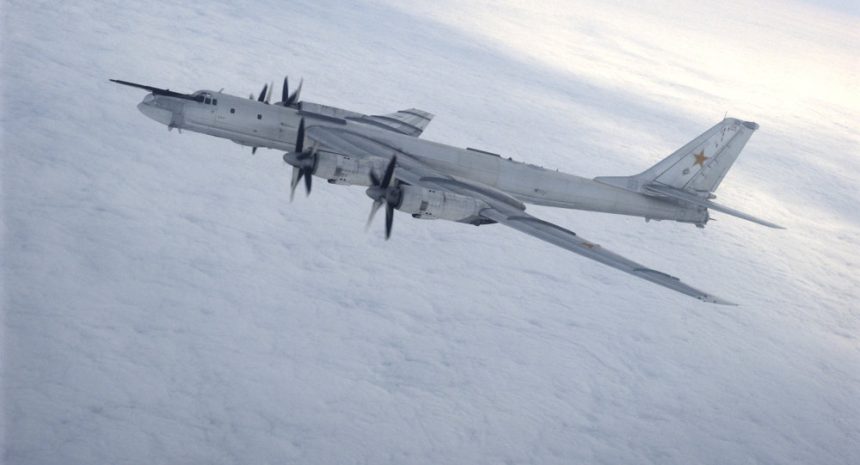Even the Russian Tu-95 Bears made a rare tour close to South Korea’s airspace yesterday.
Two Russian Tu-95MS strategic bombers briefly violated South Korea’s air defense identification zone (KADIZ) on Wednesday, prompting the country’s fighter jets to scramble to shadow the “intruders” for a few miles. The episode it’s worth of note since unlike the U.S. bombers, the Russian rarely fly close to the Korean peninsula.
Generally speaking an ADIZ is “the airspace over land or water in which the identification, location and control of civilian aircraft is performed in the interest of national security.”
ADIZs may extend beyond a country’s territory to give the country more time to respond to possible hostile aircraft: in fact any aircraft flying inside these zones without authorization may be identified as a threat and treated as an enemy aircraft, leading to an interception and VID (Visual Identification) by fighter aircraft.
“As the Russian aircraft entered the KADIZ in formation yesterday morning, a squadron of our Air Force jets made an emergency sorties,” said an officer to South Korea’s Yonhap News Agency.
The Russian planes, however, did not intrude into South Korea’s aerospace, he added.
According to the Russian MoD, during the trip the Russian Bears were accompanied by Russian Sukhoi Su-35S fighter jets and A-50 early warning and control aircraft. The flight was also intercepted by the Japan Air Self Defense Force.
Russia does not acknowledge the air defense identification zones of neighboring countries. Sometimes, its warplanes enter the zones which are a sort of defense-purpose concept neither stipulated in any state-to-state treaty nor regulated by any international body. As happened on the night of May 3, 2017, when a “mini-package” made of two Tu-95MS Bear bombers, escorted by two Su-35S Flanker-E jets, and supported by an A-50 Mainstay, flew inside the Alaskan ADIZ (Air Defense Identification Zone) and were intercepted by two U.S. Air Force F-22 Raptors some 50 NM to the south of Chariot, Alaska.
23 AUG : JASDF Fighters scrambled to intercept 2x RuAF Tu-95 Bears over the Sea of Japan & Pacific Ocean pic.twitter.com/NgfyaypO72
— Aircraft Spots (@aircraftspots) August 24, 2017
However, the Russian Bears were not the only bombers to fly in the region during the last 24 hours. Indeed, on Aug. 24, the JASDF had to intercept six Chinese Xian H-6K long-range strategic bombers (south of the KADIZ). Here below you can see the track they followed skirting Japan.
24 AUG : JASDF Fighters scrambled to intercept 6x Chinese AF H-6’s over the East China Sea & Pacific Ocean pic.twitter.com/TjUUlNdF7E
— Aircraft Spots (@aircraftspots) August 24, 2017
A more constant presence in the area are the U.S. B-1B Lancer bombers providing support to the CBP (Continuous Bomber Presence) from Andersen Air Force Base, Guam. According to the reports, two “Bones” flew from Guam to South Korea on Aug. 24.
At present 2xB-1B bmbrs (cs Deaf01flt) are on the route from Guam twrds Taiwan (prob a FONOPS over S.CH.Sea). MARSA tnkrs (cs Cylon21flt). pic.twitter.com/s37N4PpVQ2
— Mark (@Mark_swl) August 23, 2017
Indeed, U.S. B-52 and B-2 bombers routinely fly nuclear deterrence missions in the Asia-Pacific theater from both CONUS bases and Andersen Air Force Base in Guam. Sometimes, they also intrude the Chinese ADIZ: in November 2013, a flight of two U.S. B-52 bombers departed from Guam airbase entered the new Air Defense Identification Zone (ADIZ) over East China Sea close to the disputed islands without complying with any of the rules set by Beijing for the ADIZ. In that case, the mission intentionally skirted the disputed Diaoyu Islands (known as Senkaku islands in Japan).
A big thank you to @phxasc for the heads-up!
Top image credit: Sputnik News









